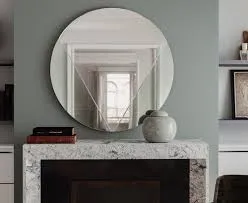

The Advantages and Applications of Low-E Glass Material
Low-emissivity (Low-E) glass is revolutionizing the way we think about energy efficiency in buildings and homes. This innovative material has become increasingly popular in architectural design and construction due to its unique properties that contribute to lower energy consumption and enhanced comfort. To understand the significance of Low-E glass, it is essential to explore its benefits, applications, and the technology behind it.
The Advantages and Applications of Low-E Glass Material
Additionally, Low-E glass can protect furnishings, flooring, and artwork from harmful ultraviolet (UV) rays. These rays contribute to fading and deterioration, and the Low-E coating effectively blocks a significant portion of them. Consequently, homeowners and businesses can enjoy their spaces without worrying about sun damage, thereby prolonging the lifespan of valuable materials and reducing replacement costs.

The environmental benefits of Low-E glass are compelling. By decreasing energy consumption, buildings equipped with Low-E windows contribute to reduced greenhouse gas emissions. This aligns with global efforts to combat climate change and promote sustainable construction practices. Furthermore, the energy efficiency achieved with Low-E glass can lead to financial incentives such as tax credits and rebates for both builders and homeowners.
Low-E glass comes in various types, including hard-coated and soft-coated versions, each offering different benefits for specific applications. Hard-coated Low-E glass is typically more durable and suitable for external applications, while soft-coated Low-E glass provides better performance in terms of insulation and UV protection, making it ideal for use in interior spaces.
With its numerous advantages, Low-E glass is increasingly being specified in new buildings and renovations alike. Architects and builders are recognizing its value in modern design, integrating it into residential properties, office buildings, and commercial spaces. High-performance glazing systems featuring Low-E glass are becoming synonymous with energy-efficient architecture.
In conclusion, Low-E glass represents a significant advancement in building materials that prioritize energy efficiency, comfort, and sustainability. Its ability to reflect heat while allowing light to enter not only enhances the quality of indoor environments but also plays a crucial role in reducing our ecological footprint. As the demand for greener construction practices continues to grow, Low-E glass stands out as a key component in the quest for a more sustainable future. Embracing this technology in building design will undoubtedly lead to lasting benefits for both individuals and the planet.